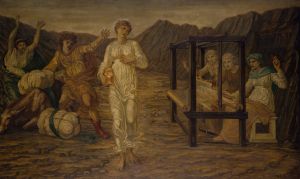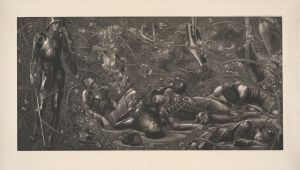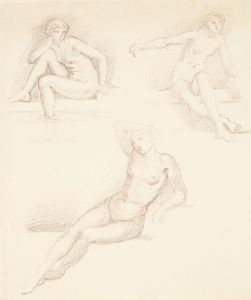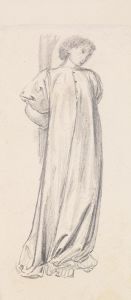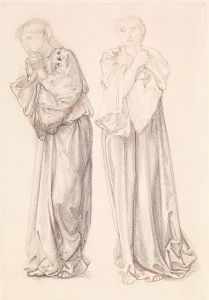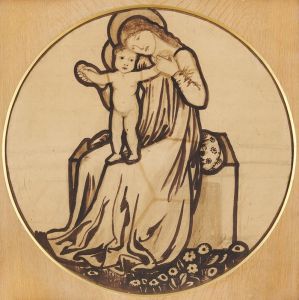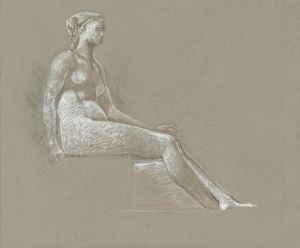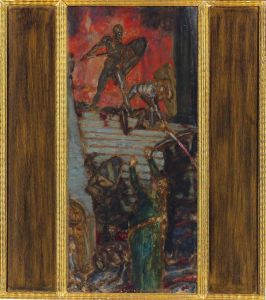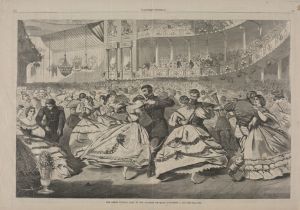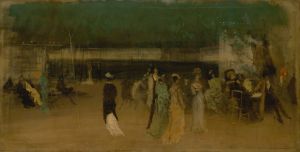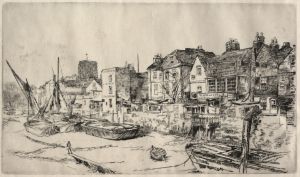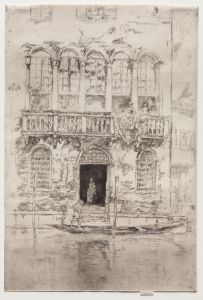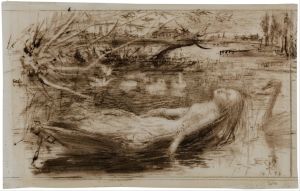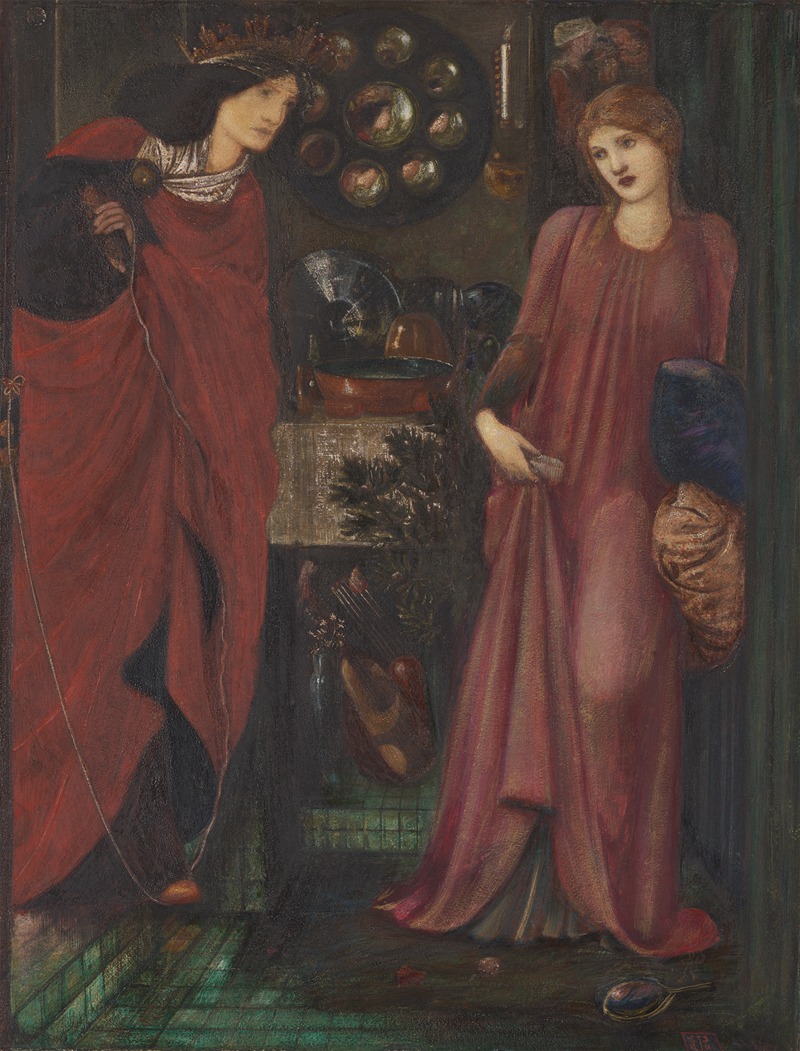
Fair Rosamund and Queen Eleanor
A hand-painted replica of Sir Edward Coley Burne-Jones’s masterpiece Fair Rosamund and Queen Eleanor, meticulously crafted by professional artists to capture the true essence of the original. Each piece is created with museum-quality canvas and rare mineral pigments, carefully painted by experienced artists with delicate brushstrokes and rich, layered colors to perfectly recreate the texture of the original artwork. Unlike machine-printed reproductions, this hand-painted version brings the painting to life, infused with the artist’s emotions and skill in every stroke. Whether for personal collection or home decoration, it instantly elevates the artistic atmosphere of any space.
"Fair Rosamund and Queen Eleanor" is a painting by the British artist Sir Edward Coley Burne-Jones, created in 1861. Burne-Jones was a prominent figure in the Pre-Raphaelite Brotherhood, a group of English painters, poets, and critics founded in 1848. The Brotherhood sought to return to the detail, intense colors, and complex compositions of Quattrocento Italian art.
The painting depicts a scene from the legendary story of Rosamund Clifford, often referred to as "Fair Rosamund," and Queen Eleanor of Aquitaine. According to legend, Rosamund was the mistress of King Henry II of England. The story goes that Rosamund was hidden away in a secret labyrinth at Woodstock to protect her from the jealousy of Henry's wife, Queen Eleanor. Despite the precautions, Queen Eleanor is said to have discovered Rosamund and forced her to choose between death by poison or the dagger.
In Burne-Jones's painting, the artist captures the dramatic moment of confrontation between the two women. The composition is characterized by its intricate detail and the use of rich, vibrant colors, typical of the Pre-Raphaelite style. The figures are rendered with a high degree of realism, and the emotional tension of the scene is palpable.
Burne-Jones's work often drew on themes from mythology, literature, and medieval history, and "Fair Rosamund and Queen Eleanor" is no exception. The painting reflects the artist's interest in the romantic and tragic elements of historical and legendary narratives. The Pre-Raphaelite Brotherhood, of which Burne-Jones was a part, was known for its fascination with such themes, as well as its commitment to reviving the techniques and aesthetics of early Renaissance art.
The painting is also notable for its use of symbolism. The labyrinth, for instance, can be seen as a metaphor for the complexities and dangers of love and desire. The contrast between the two women – Rosamund's innocence and beauty versus Eleanor's power and determination – adds to the painting's dramatic impact.
"Fair Rosamund and Queen Eleanor" is housed in the Tate Britain, a major art gallery in London. The painting is part of the gallery's extensive collection of British art, which spans from the 16th century to the present day. It remains an important example of Burne-Jones's work and of the broader Pre-Raphaelite movement.
In summary, "Fair Rosamund and Queen Eleanor" by Sir Edward Coley Burne-Jones is a significant work of art that exemplifies the Pre-Raphaelite Brotherhood's ideals and aesthetic principles. Through its detailed composition, rich color palette, and evocative subject matter, the painting continues to captivate viewers and offer insight into the romantic and tragic dimensions of historical legend.





